Golda Meir
From Tsarist Russia to the top of Israel: Portrait of a Zionist Pioneer
7/28/20254 min read

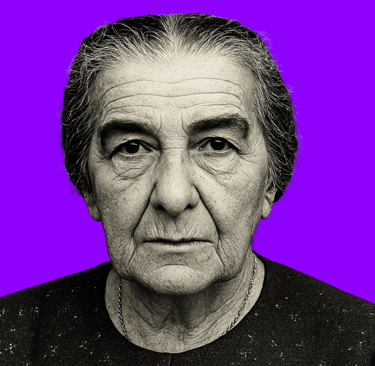
A childhood in Tsarist Russia
Golda Mabovitch was born in Kiev in 1898 to a Jewish family. She was the second of three daughters. Under the Russian Empire, Jews faced pogroms and discrimination, often blamed for the death of Christ. Golda’s father struggled to find stable work and emigrated to Milwaukee, USA, in 1903. Her older sister Shayna became politically active, joining the Zionist labor movement, opposed to the anti-Zionist Jewish socialist Bund. In 1906, Golda and the rest of her family joined him and left Russia behind.
Zionist commitment in the United States
From the age of 9, Golda often skipped school to help her mother in the grocery store. Despite her tuberculosis, Shayna continued her activism. Golda became deeply interested in Zionism. At 12, she was handing out leaflets and speaking in the streets to promote the idea of a Jewish homeland in Palestine. At 19, she married Maurice Meyerson, a quieter man who would share her life, but not always her ideals.
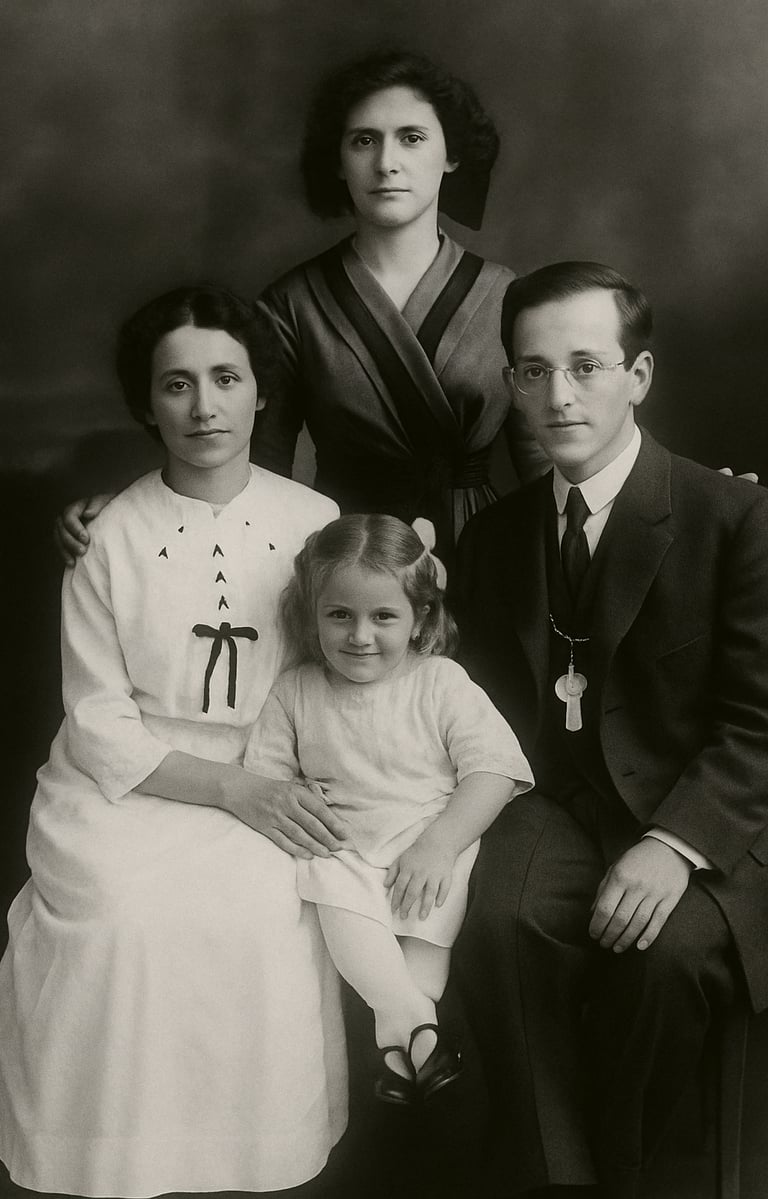


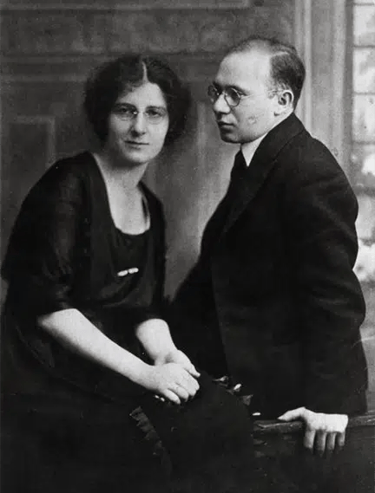
Golda and Maurice
Golda behind her sister Shayna her husband and their daughter
Palestine as a destination
In 1921, Golda and Maurice emigrated to British Mandate Palestine after a long and difficult sea voyage. They settled in a kibbutz — a collectivist and austere life aligned with her values. Maurice struggled to adapt. Golda, however, quickly integrated. She joined the Histadrut (the major agricultural workers’ union) and became an influential figure within the Yishuv, the pre-state Jewish community. She joined the Mapai, the dominant labor party, and gave birth to two children: Menachem in 1924 and Sarah in 1926.
“There were no such thing as Palestinians… It was not as though there was a Palestinian people… and we came and threw them out and took their country away from them… They did not exist.”
Golda Meir, The Sunday Times, June 15, 1969
Before the declaration of the State of Israel in 1948, Golda returned to the U.S. to raise funds from Jewish communities in anticipation of war. These funds helped arm the new state, which immediately entered what Israelis called the "War of Independence" — and Palestinians, the "Nakba." Israel repelled a coalition of Arab states. Prime Minister David Ben-Gurion appointed her ambassador to the Soviet Union. She spent several months in 1948 in Moscow, during a resurgence of Soviet antisemitism.
Back in Israel, she became Minister of Labor (1949–1956), introducing social reforms such as public housing and national insurance. She then served as Foreign Minister until 1966. She adopted the Hebrew name “Meir” — meaning "to illuminate" — in 1946, as part of a common expectation for Israeli officials to Hebraize their names. Maurice died in 1951, worn out by years of illness and growing estrangement.
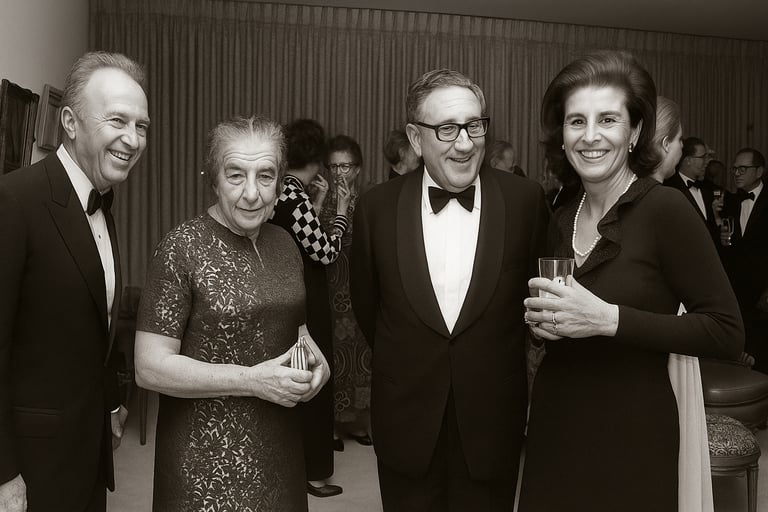

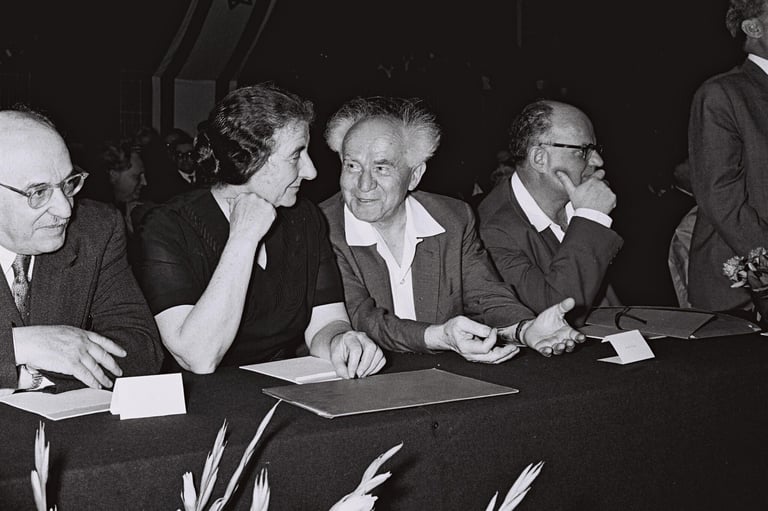

Zalman Shazar, Golda Meïr, David Ben Gurion and Giora Josephtal, 1959 (Crédit : Hans Pinn/GPO)
Golda Meir and Henry Kissinger surrended by Yitzhak Rabin and his wife
The Six-Day War
Though officially retired from politics, Golda remained a respected figure. In 1967, Israel launched a pre-emptive strike and captured East Jerusalem, the West Bank, Gaza, the Sinai, and the Golan Heights. A military triumph, but the beginning of a prolonged occupation. Golda quietly supported the hardline stance.
“This country exists as the fulfillment of a promise made by God Himself. It would be ridiculous to ask it to account for its legitimacy. What we want now is peace.”
Golda Meir, Interview with Le Monde, October 15, 1971
Prime Minister and crisis
In 1969, after the death of Levi Eshkol, Golda became Prime Minister — Israel’s fourth and its first woman to hold the post.
In 1973, Syria and Egypt launched a surprise attack on Yom Kippur. A mysterious figure, Ashraf Marwan (son-in-law of former Egyptian President Nasser), had offered Israel intelligence — but gave them false dates. Israel was caught off guard. The result: 2,800 Israeli and 15,000 Arab deaths. Public opinion was shaken. Marwan would be hailed as a hero by both Egypt and Israel. Golda was blamed for the lack of preparedness. Though a commission partly cleared her, public pressure led to her resignation in 1974. She died in 1978 in Jerusalem.
conclusion
Golda Meir remains a prominent figure in the history of Israel, both as a pioneer of Labor Zionism and the first woman to lead the country. Yet, her legacy remains deeply controversial. A secular and non-practicing Jew, she nonetheless did not hesitate to invoke a divine promise to legitimize the State of Israel. Her experience with antisemitism led her to view the Zionist project as an existential necessity, even at the cost of adopting a supremacist stance in which the very existence of the indigenous Palestinian people was denied. Her name thus remains associated with a vision in which the vital need for a Jewish national homeland justifies the disregard and erasure of the Palestinian people.
